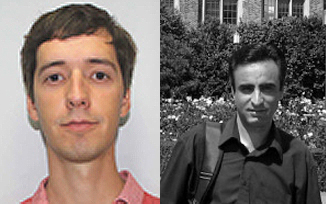
- Details
- Thursday, 30 March 2017

The BioXFEL Center is proud to announce the recipients of the Postdoctoral Research Award, Benjamin Stauch and Ahmad Hosseinizadeh. Dr. Stauch is a Postdoctoral Research Associate in the group of Prof. Vadim Cherezov at the Bridge Institute of the University of Southern California in Los Angeles. He received his Master’s degree in Bioinformatics from the University of Frankfurt (Germany) in 2007 and carried out his doctoral research within the EMBL International Ph.D. Programme at EMBL Heidelberg (Germany) and the University of Cambridge (UK) where he obtained a Ph.D. in Biology in 2013.
He joined the lab of Prof. Cherezov as an EMBO Long-Term Postdoctoral Fellow in 2014 and investigates the structure and dynamics of G protein-coupled receptors (GPCRs), transmembrane proteins that are an especially important class of drug targets. His training in NMR spectroscopy, molecular modeling, and X-ray crystallography have shaped his interest in time-resolved crystallography using XFELs to study GPCR activation. By designing photo-switchable, specific small molecule binders for GPCRs, Dr. Stauch hopes to probe receptor plasticity and protein conformational response upon ligand binding in a native-like lipidic environment.
Dr. Hosseinizadeh received a master’s degree in physics from Institute for Advanced Studies in Basic Sciences (Iran), before receiving his PhD in physics from Laval University (Canada). He currently works as a research scientist in the area of structural biophysics with X-ray diffraction at the University of Wisconsin. His work experience includes, development of machine-learning approaches capable of extracting structural and dynamical information of biological entities from large collections of data with overwhelming noise. Employing advanced machine-learning algorithms for classification and interpretation of complex experimental and simulation data, development of artifact and noise recognition and removal techniques for experimental data. His primary research plan is to work in the area of BioXFEL physics to address challenges using advanced algorithmic tools including those with which he has conducted previous research (e.g., manifold embedding, statistical methods, as well as linear and non-linear SVD techniques).
